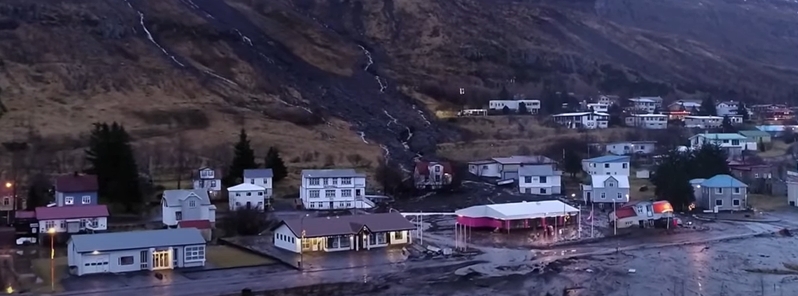Large landslides cause major damage in Seyðisfjörður, Iceland

A series of landslides have been reported in the town of Seyðisfjörður, Iceland, causing major damage to at least 10 houses and electrical poles. A red alert phase has been in effect in the area since December 15, 2020, with fears that more houses would be lost in the slips, while residents nearby Eskifjörður had to be evacuated as well due to the hazards. The landslips occurred following days of heavy rain– meteorologists said the precipitation from December 14 to 18 was the most recorded during a five-day period in the country.
On Friday, December 18, residents in the town were evacuated after a large landslide damaged at least 10 houses. Local reports said only first responders, meteorologists, reporters, and electrical repair team has been allowed in the area.
Around 700 people reside in the town, and some of them stayed with friends, relatives, or at hotels in nearby communities.
Kristín Björg Ólafsdóttir, a climate specialist at the Icelandic Met Office told Iceland Monitor that up to 570 mm (22 inches) of rain fell in the town from December 14 to 18– the most recorded in a five-day period in Iceland. By comparison, the average yearly precipitation in Reykjavik is 860 mm (34 inches).
"All of us are very grateful that no lives were lost," said Hildur Þórisdóttir, former president of the Seyðisfjörður town council. "Amid this whole disaster, that is a miracle."



The Department of Civil Protection and Emergency Management issued a red alert phase for the area on Tuesday, December 15.
"I fear this isn't over yet, and that we'll lose more houses," Hildur added. "It is clear that an enormous amount of water has accumulated in the mountains."
"A great deal of work is ahead, cleaning, and rebuilding. At the same time, people show incredible solidarity. Seyðisfjörður is a community of residents who love living there. The people were resilient already, and I hope that resilience will carry them through this terrible shock."
As the risk of further landslides remains, residents in parts of nearby Eskifjörður had to be evacuated. Mountainsides remain saturated with rainwater, and fissures in an old road above the town were reported to have grown wider.


Featured image credit: Just Icelandic/YouTube

Commenting rules and guidelines
We value the thoughts and opinions of our readers and welcome healthy discussions on our website. In order to maintain a respectful and positive community, we ask that all commenters follow these rules:
We reserve the right to remove any comments that violate these rules. By commenting on our website, you agree to abide by these guidelines. Thank you for helping to create a positive and welcoming environment for all.